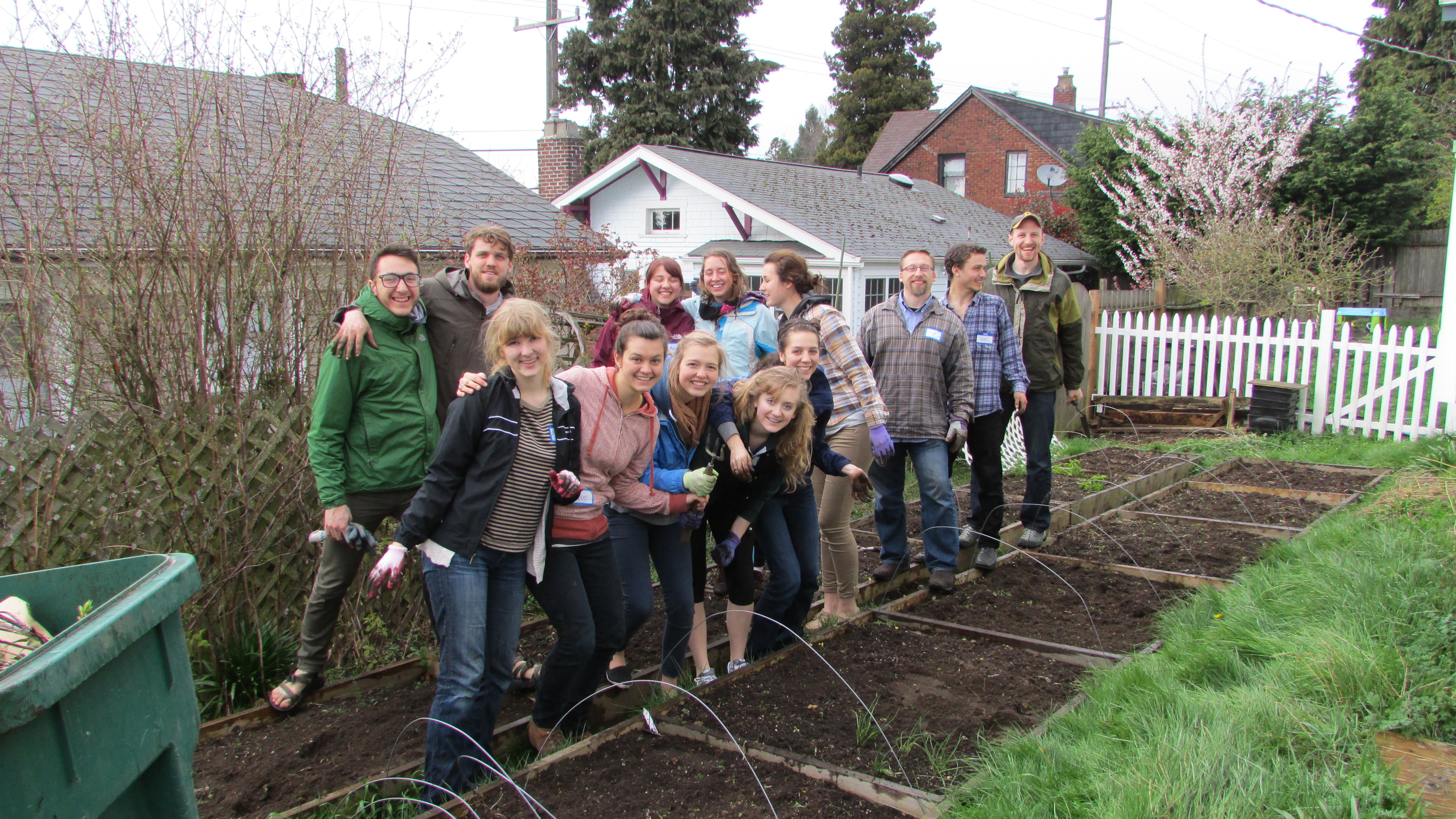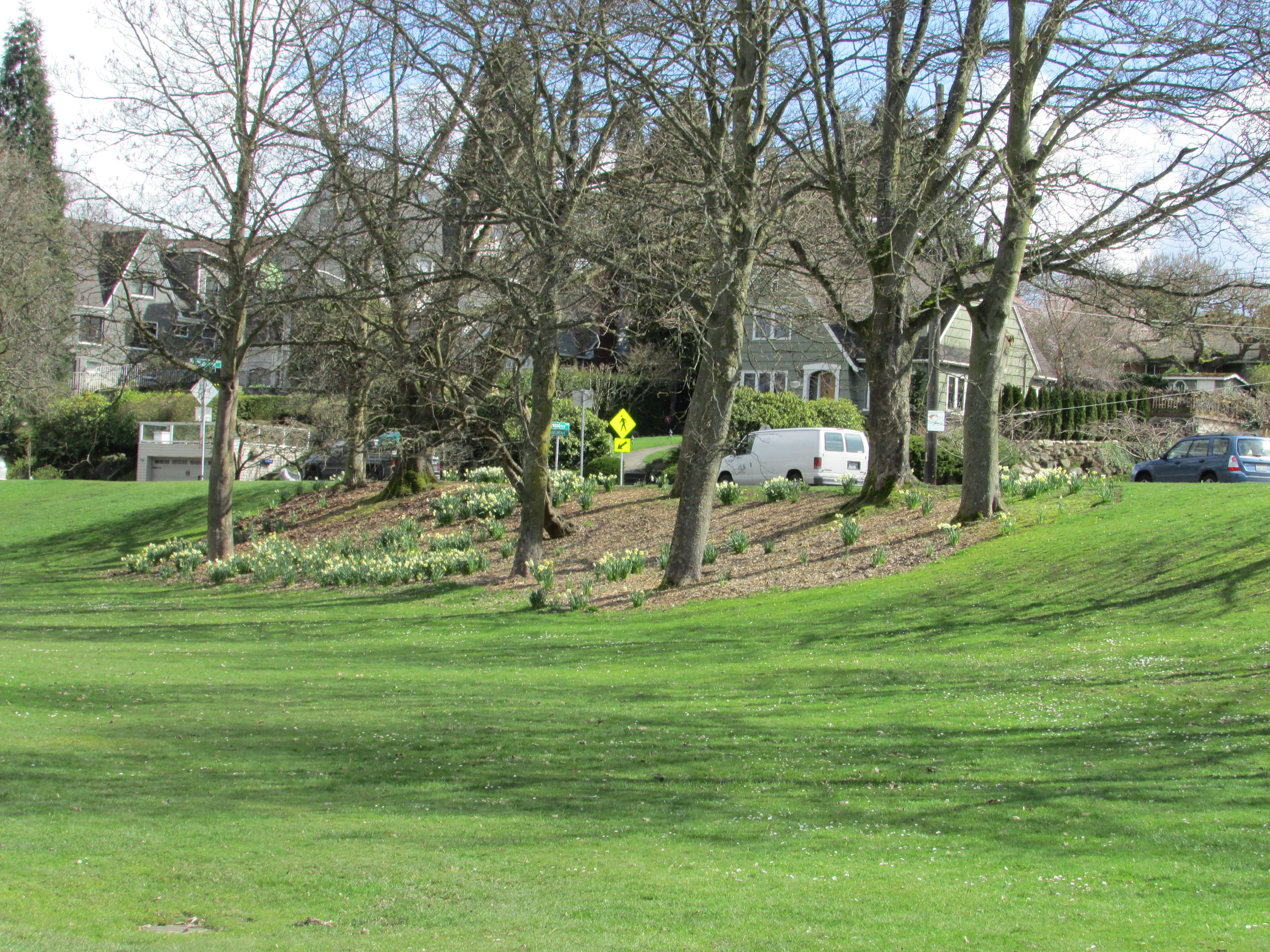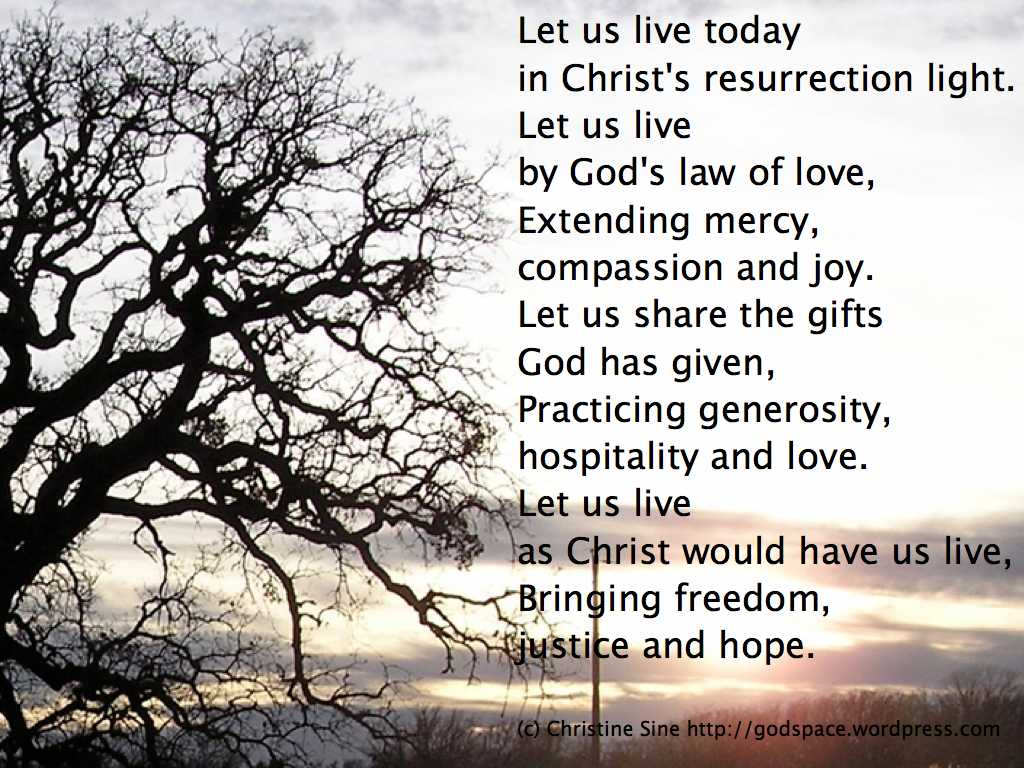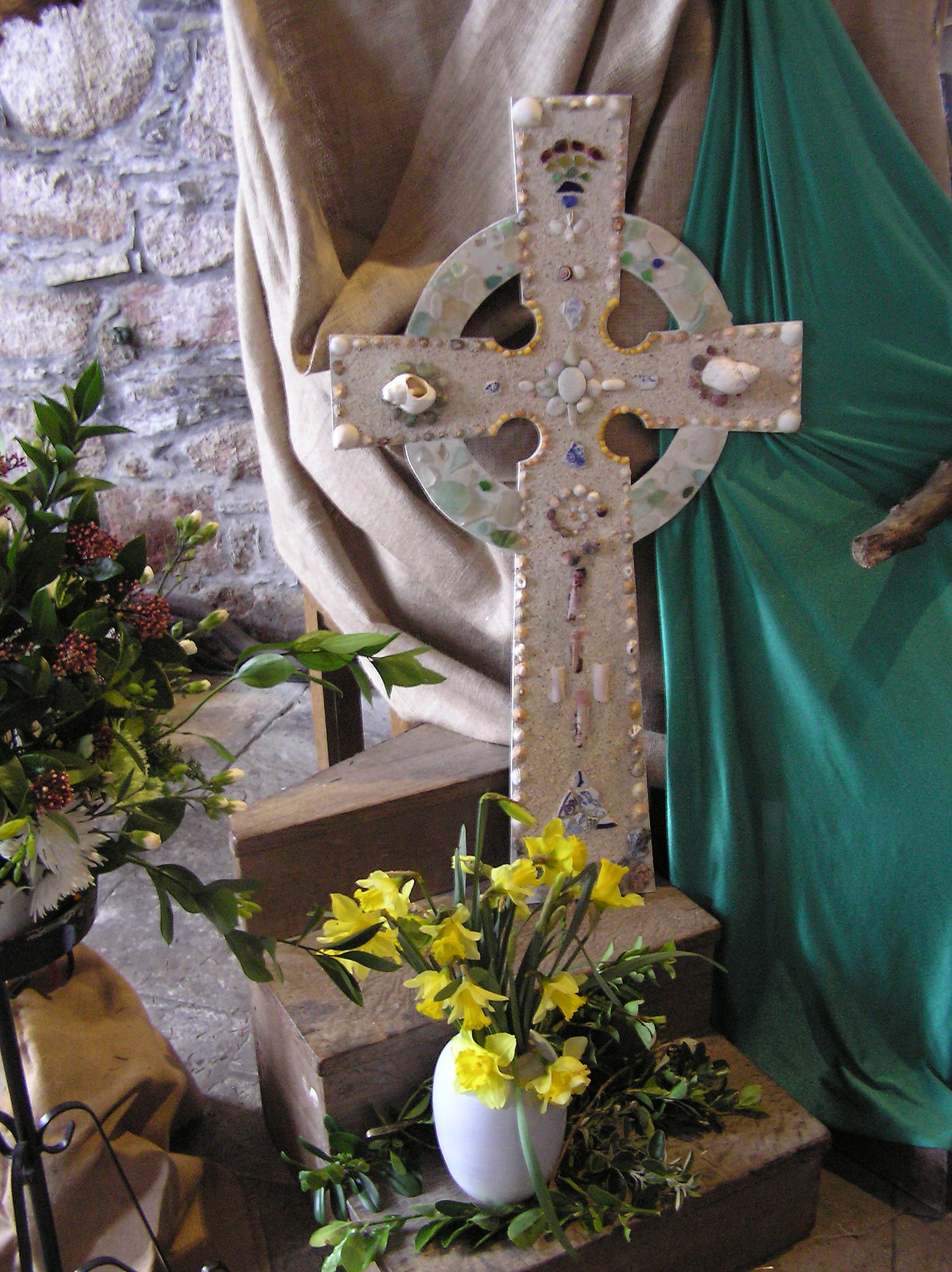Each year, as you know I like to update my resource lists. Here are the best sites and suggestions I have come across since I posted my list last year. I have already written some comments on the topic of community gardens this year:
Creating A Faith Based Community Garden – Much to Reflect On
And if this does not provide enough reading for you, you might also like to check out this list of resources for urban farmers:
My Favourite Urban Farming WebSites
Note: This is partly reposted from last year’s list with some additions and deletions where links have changed.
Resources for Creating a Faith Based Community Garden
- Montgomery Victory Gardens: Tips for Starting a Faith Based Community Garden
- North Carolina State University Community Gardens: Eat Smart, Move More North Carolina: Growing Communities Through Gardens
- Seattle Public Utilities Natural Lawn and Garden Care provides a variety of downloadable resources including:
- Garden planning
- I just started using the Mother Earth Garden Planner and am loving it
- Plan Garden – a web based garden planning site
- Gardener’s Supply Kitchen Garden Planning – a great tool for planning a garden based on the square foot garden method. This is free but more limited.
- Sparks in the Soil
- Sustainable Northwest: Interfaith Network for Earth Concerns
- Sustainable Traditions
- Soulsby Farm blog
- Faith & Food: Biblical Perspectives (United Methodist Church)
- Food and Faith blog (Presbyterian Hunger program)
- For those interested in food, faith, and gardening in the Twin Cities, visit the Facebook page created by the Faith-based Edible Gardening Collaborative.
Some resources from my friends at ARocha Canada
- The Vancouver Community Agriculture Network www.vcan.ca: an excellent community garden manual available on their website – a good, thorough guide to starting and running a community garden
- The American community garden association www.communitygarden.org
- City of Vancouver Community Services Social Planning Department www.vancouver.ca/commsvcs/socialplanning/initiatives/foodpolicy/projects/gardens.htm: a website with an extensive list of resources, links, etc. for community gardening.
- City Farmer www.cityfarmer.org: a veritable treasure trove of information on all manner of urban agriculture information
And from England
- Grow Zones – a community growing resource started by Earth Abbey in the UK, that brings people together locally to help one another grow fruit and vegetables in their own gardens. Participants are supported by the Grow Zones Kit, which is designed to make the prospect of growing fruit and vegetables a less burdensome, more enjoyable prospect and overcome the obstacles to ‘growing your own’.
- Earth Abbey
As well as my own book To Garden with God, you may also find the following books on spirituality and gardening helpful
- Farming as a spiritual discipline
- The art of the commonplace: The agrarian essays of Wendell Berry
- Craig Goodwin: Year of Plenty
- Brother Victor-Antoine d’Avila-Latourrette, A Monastic Year: reflections From Monastery
- Vigen Guroian: Inheriting Paradise: Meditations on Gardening
- Wendy Johnson: Gardening at the Dragon’s Gate: At Work in the Wild and Cultivated World
Resources-Curricula for Churches / Faith communities
From Catholic Community Gardens:
- start a faith-based garden! here’s how: Howtostartafaithbasedcommunitygarden2.pdf
- garden food safety: FoodSafetyWebCurriculum.pdf
- community garden tips: howtostartacoomunitygarden.pdf
- allotment garden tips: allotmentgardens.pdf
Some of these ideas are a little repetitive but I also loved:
- this leaflet from WeTHRIVE! which partnered with the Center for Closing the Health Gap (CCHG) on 20 gardens. CCHG developed a model for church-based gardens:Do Right! Church-Based Gardens Tool-Kit, to help alleviate poverty in Hamilton County near Cincinnati.
- Just Eating? (Presbyterian Church USA curriculum for middle schoolers and adults)
- Congregational Tool Kit – Land Stewardship Project . This kit contains videos, resource materials and activities for small and large group gatherings with a focus on building healthy communities by linking people with their food, the land and each other.
- Let’s Move Faith and Communities launched by Michelle Obama provides some excellent resources including this toolkit which contains good basic information on community gardening
- The US Department of Agriculture also has some helpful resources available including this start up community garden guide
- Master gardener programs which exist throughout US and Canada are a great resource for volunteers, advice and expertise. I heartily recommend contacting your local branch to see if there is a volunteer who might assist your garden’s development.
- Harry Wyman from the Peace Tree Community in Perth has started a global permaculture network. I love the concept of permaculture and hope that we will be able to implement many of its principles in our garden at the Mustard Seed Village
This year I have taken Seeds of Change off my list (see explanation here)
Spring is here – at least in the Northern Hemisphere and it makes me realize how important it is to connect the rhythm of our faith to the rhythm of God’s world. It was only when I sent Easter in the Northern Hemisphere for the first time that the wonder of the resurrection burst upon me. And even now I am awed by the blossoming of God’s world in a way that assures me resurrection really has happened and God’s new world has begun.
At lunch today I will once again be speaking on Spirituality and Gardening. The increasing popularity of this topic makes me realize how much others crave the same kind of connections between their faith and the world around them. As I always say in these seminars: In the Bible I read about the death and resurrection of Christ, in the garden I experience it. In the Bible I read about the abundance of God’s provision, in the garden I experience. The story of God is constantly being lived out God’s world, affirming who God is and who God intends us to be.
Like me many urban dwellers have discovered the joys of vegetable gardening in the last few years and in the process have grown in their intimacy with God. Hopefully, they start small and then as their taste buds explode with the delight of vegetables straight from the garden something strange happens and they become obsessive about converting their lawn into edible vegetation. There is nothing quite like the wonderful sweet flavour of tomatoes picked straight from the vine or of corn that has gone straight from plant to the pot. And to experience the delight of leeks and carrots that have been dragged out of the frosty ground is out of this world.
Why has it taken us so long to discover what people in most other parts of the world have always known – store bought food just doesn’t taste real even when it is organic and “picked from the vine”. Even a friend of ours who is a well known celebrity chef has just discovered in his 70s that food grown in your own backyard is better than any restaurant gourmet meal.
There are many other benefits to growing your own food too. Working in the garden gets us outside into God’s good creation. As I mentioned in a previous post on nature deficit disorder, I don’t think that we realize the consequences to our health – both physical and spiritual of lives that are spent inside under artificial light. Insomina, depression, and of course obesity are all linked to sedentary indoor lives. A growing number of people are talking about nature deficit disorder. Kids in particular suffer from nature deficit disorder and as I talk about in this post: attention deficit disorder can be alleviated by encouraging kids to spend more time outdoors.
There is also evidence that exposure to soil bacteria could improve our health by boosting our immune system. And believe it or not even Sniffing Compost Makes You Happy – Literally
Other studies suggest that just looking at nature can improve our health and reduce the time it takes us to recover from surgery. So imagine what a difference a whole afternoon outside can do.
Getting our kids involved in the garden can have even more benefits. In her article Go Outside and Play: Four Reasons Why Exposure to Nature is Essential To a Child’s Wellbeing, Suzy DeYoung talks about the amazing health benefits of getting kids outside. According to the EPA indoor air pollution is the US’s number one environmental health concern. They encourage kids to get outside and play but I think that working in the garden can be even more beneficial.
There is also evidence that spending time outside in nature stimulates our creativity and imagination. And gardening certainly adds to that creativity – because once we have produced all that food we need to work out what to do with it which means that we become more creative in our cooking and our preserving of food too. At least that has been my experience.
I posted this prayer on Facebook this morning. It was so popular that I decided to add a photo and post it again here. enjoy!
The focus for my next few weeks will be “Practicing resurrection”. I am starting each morning by asking myself the question: “How do I plan to practice resurrection today?”
This morning I found my thoughts focusing on my images of God’s new world – what I call God’s resurrection created world. What do I think this will look like? Unless I have a clear vision of this world there is no way that I can live into it.
Usually I confine this kind of imagining to Sundays. God’s rest on the seventh day was a rest of satisfaction, when he looked around at all that had been accomplished in the previous six days and said “It is good.” That is the kind of Sabbath rest that we are meant to live into. What I try to do on Sundays (and some Sundays are more successful than others) is relax and rest in the presence of God and God’s shalom world.
I was really inspired some years ago by the Jewish philosopher Abraham Heschel who said that the Jews regarded Sabbath as a glimpse into the eternal world. I realized that my Sunday practices looked nothing like what I hope God’s eternal world will look like. So I started to try and realign my Sunday activities to reflect more of what my vision of God’s future eternal, shalom filled world will look like.
Easter tends to be a more successful season for this focus in my life. Thinking of the resurrection makes it easy to reflect on my images of God’s eternal world – A world in which the language is love and the culture centres on mutuality and generosity. A country where there is no more crying or oppression or pain, a place where justice will come for the poor and the sick will be healed, a place where God’s creation is restored and there is abundance and prosperity for all.
This is a world with very different values and culture than ours. In fact I think that many of us will suffer severe culture shock when we enter this world because we have spent so little of our time and energy living in this culture here.
So this morning I thought about where I have caught glimpses of God’s shalom world in this past week. I got quite excited as I thought about the people I have connected to and some of the friendships I am developing. I was encouraged as I thought about my friends in Parish Collective, The Overflow Project and Mercy Ships and the wonderful work they all do in reaching out to their neighbourhoods and the marginalized around the world. I also experienced a deep sense of satisfaction as I thought about the day Tom and I spent in the garden on Saturday planting the spring garden.
I went to church Easter Sunday very much aware of God’s presence with me which of course made it much easier to enter into the spirit of Easter in the liturgy and particularly in communion. Sunday afternoon we celebrated Easter with a richly multicultural community of friends – a glimpse into the diversity of God’s international family.
I thought too about the things I have done that are not representative of God’s resurrection created world – the times I got irritable with Tom, times I resented sharing the bounty God has provided us with, times I turned away from those who are hurting and in need because I wanted to put my own needs ahead of theirs. Because of Christ’s resurrection we can live in a way that is very different from the culture around us but we need to keep reminding ourselves of what that culture looks like and what we need to do to live into it.
Sunday for me, is always a day to realign my life and all my activities not just to the celebration of God’s shalom future but to how God can use our lives to bring glimpses of that future into our world. Obviously Easter Sunday and this season after Easter, is a very special opportunity to do this.
It is a season for celebrating our restored relationship to God, our reconciliation to our neighbours, our renewed responsibility to steward God’s creation. So why not jump start your celebration of God’s resurrection culture, by spending time reflecting on God’s eternal shalom world, this resurrection created life that God expects us to live into? Get a vision for how your life and your activities could make a difference in the lives of others and in God’s world. We cannot bring God’s eternal world into being by our own efforts but we are meant to live as citizens of that new world and live with the values and customs of that new world at the centre of our lives.
Easter Sunday has come and gone and its time to practice resurrection living! As I mentioned in my post Practicing Resurrection yesterday, Easter is not just a day it is a season, in fact it is the framework for the rest of our lives. Over the next few weeks I plan to share a number of stories of creative ministries and initiatives that do just that. Today’s post is written by Brian “Wolt” Wolters, director of The Overflow Project. It was first published as Being Radical, Good Friday on the MSA website as part of a series on the Overflow Project. The MSA team are all joining the initiative this year and we hope you will too.
——————————————————————————————————-
Over the past several weeks I have found myself coming up with excuses to drive to work instead of ride my bike. Even before I get in my truck I tell myself, “Oh, one more day of driving and then I’ll start riding my bike,” or even on a sunny day I’ll say “Oh, it may rain today, so I’ll just drive.”
Why is it that we often have good intentions of doing something we think is best, but then opt for something easier or more convenient? Why do we form habits as human beings that prevent us from being radical?
Many books explore these questions. Some prescribe easy “steps” or even “recipes” for breaking out of patterns and molds that develop over time. On the flip side, other materials suggest creating new habits for life change like setting aside time for prayer and exercise daily.
Insert Good Friday. Jesus’s death on a cross is radical I think. He does not conform to culture or take the easy, most comfortable option. He also does not say oh today, I’m going to start “effective habits.” He even goes against his own desire and chooses to die! If you want a vivid reminder the horror of his death, pick up the Mel Gibson film, The Passion of Christ.
The reminder of Jesus death on Good Friday inspires me to be more in tune with God’s voice for my life – instead of my own desires – and explore being radical by forming new habits and breaking old ones. I pray I am who God made me to be and that I my eyes open to see my comfort zones.
I shared these thoughts about Easter with MSA last year, and am just as excited about The Overflow Project’s initiative this year. The opportunity is great: to join with others in a unified effort to live with a little less and be able to give a little bit more, following the mold of Jesus death on the cross and celebrating on Easter his resurrection.
Perhaps today is a day to break a habit or start a new one. Jesus leads us in His way and with His death.
An opportunity to celebrate his resurrection on Easter exists.
Join in a challenge for the 50 days of the Easter season.
This is the fourth post in a Friday series about The Overflow Project that was published on the MSA blog, leading up to the 50 Day Challenge starting on Easter.
Periodically during the 50 days, various Challenge participants with share how they are taking the challenge and what they’re learning.
If you decide to take the challenge, please register on their page and share your story!
The Overflow Project is an initiative committed to a new way of living, a way of living that breaks down the walls that divide rich and poor. Using a 50-Day Challenge, The Overflow Project helps individuals, groups and churches simplify their lives in order to give generously. Donated funds provide clean drinking water – a vital resource for community and economic development.
Its Easter Sunday, for many of us the culmination of our faith, the day for which all of us have waited, hoped and longed for. For many of us this seems like the end of the story, at least that is what you would think by the way we act during the rest of the year. Easter Sunday comes, we give our shouts of Alleluia, sing a few songs of praise, and then we pretty much go about life as usual. Tomorrow we will wake up, drink a cup of coffee or tea, and as I said in a previous Easter post What Have We Done with Jesus, go back to our pre Christ encounter jobs totally unchanged by all that Jesus has said and done.
Easter Sunday is not an end but a beginning. And it isn’t just a single day, it is a whole season that extends until Pentecost. How could we possibly celebrate the wonder of God’s new world which was ushered in by the resurrection, in a single day? And how can we possibly confine the practice of this incredible event to a short church service.
This is the season to practice resurrection, the time to go out and not just shout about the new life we have in Christ but to live it. Jesus resurrection transformed his disciples. They left homes and families and jobs to live radically different lives. They sold their property and shared it with others. They looked after the sick and cared for the marginalized, and guess what, this small band of disciples became a world wide movement that still transforms lives today. What difference has it made in our lives?
In my study guide Celebrating the Joy of Easter, I ask
What kind of God do we want to incarnate to our world? Is it a God of love and compassion who leaves ninety-nine sheep in order to rescue one that has gone astray, or one who constantly accuses those who do not follow God’s ways? Is it a God who gets his hands dirty by entering, in a very personal and human way, into the pain and suffering of our world, or one who inflicts pain and anguish as punishment for our sins? Is it a God who celebrates life with enthusiasm by turning water into wine at a wedding, or one who strips us of our joy by placing heavy burdens on our shoulders? Is it a God who hears our cries and brings justice for the poor and oppressed, or one who stands aloof and indifferent to our pain?
Easter is the season to show others what kind of world we believe Jesus resurrection ushered into our broken world. It is a season to get out and practice hospitality, compassion, love, healing, generosity and care for creation. It is a season to show by our words and actions that we really do believe Jesus is indeed alive and is transforming our world… through us!
It is Holy Saturday, that day between death and resurrection when most of us pause to draw breath. What did not occur to me until I read these words Even resurrection pauses for Sabbath rest, in the Episcopal Relief and Development Lenten guide this morning, that today, for the Jews is indeed the sabbath day. This full day of Jesus time in the grave is the day into which all their hope and longing for the future is poured. A day to look forward with anticipation to the day when God does indeed make all things news.
The last words that Jesus cried before his death are It is finished. The work that God has sent me to do is done. It is indeed time to pause for rest, but what is God’s sabbath rest all about? Sabbath rest is not a rest of exhaustion, a pause before we get going with the next busy thing. Sabbath rest is a rest of fulfillment, of satisfaction for a job well done and as I sit here this morning I can well imagine God resting in the satisfaction of the amazing job that Jesus had just completed.
For the Jews Sabbath also carries with it a sense of longing and promise. It is the culmination of their week, that day on which they hoped to glimpse God’s eternal world and on this Sabbath rest 2,000 years ago they did glimpse it, though they did not know it. As Jesus entered Hades and released those who had died, the first signs of God’s resurrection world emerged in expectation of the fullness of God coming into the world on Easter morning.
As an Amazon Associate, I receive a small amount for purchases made through appropriate links.
Thank you for supporting Godspace in this way.
When referencing or quoting Godspace Light, please be sure to include the Author (Christine Sine unless otherwise noted), the Title of the article or resource, the Source link where appropriate, and ©Godspacelight.com. Thank you!







